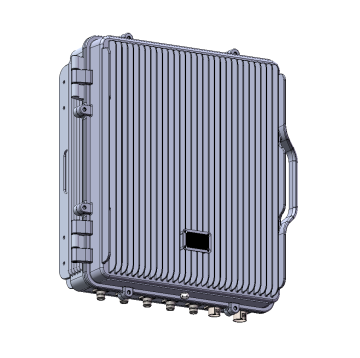X1C is a fixed detection system with comprehensive drone
surveillance capabilities. It monitors the S/N code, model,
coordinates (longitude, latitude, altitude), speed, home
point, flight path, controller coordinates(longitude,
latitude) and other information of drones within its range
through data mining and deep analysis of drone signals.
X1C is suitable for lower airspace security in scenarios
such as governmental venues, critical industrial
facilities, military compounds, airports, border control
etc. It works independently offline, fits flexibly to
various scenarios and supports quick
installation. It also works together with multiple devices
networked or integration with other counter drone devices
such as TDOA system, jamming system and so on to form a
more complete counter drone network.
1) Drone monitoring: Capable of obtaining
information such as serial number, model, position
(longitude, latitude, azimuth), speed, altitude,
takeoff point, return point, trajectory, remote
control position (longitude, latitude, azimuth),
etc. of unmanned aerial vehicles within the
monitoring range.
2) Unique ID identification: Identify the unique
serial number of the drone and confirm its unique
identity information.
3) UAV positioning: Positionable drone position
information, real-time display of drone position
(longitude and latitude), azimuth information, and
distance information (the distance of the drone
relative to the location of the device).
4) Flying hand positioning: Positionable pilot
position information, real-time display of pilot
(remote control) position (longitude and latitude),
azimuth information, distance information (the
distance of the pilot relative to the position of
the device).
5) Multi target trajectory tracking: Capable of
locating and tracking drone swarms, while
displaying multiple drone flight trajectories.
6) Black and White List: Distinguishable between
cooperative and noncooperative drones, with no
alarm provided by the device when detecting
cooperative drones, and trust labeling for
cooperative drones.
7) Intrusion alarm: When the device detects a drone
intrusion, it will issue an audible or visual
alarm.
8) Track playback: Support drone flight trajectory
playback and assist security personnel in analyzing
historical drone flight data.
9) Detection record: The detection record list can
preserve historical detection records, including
multidimensional information such as drone serial
number, model, frequency, etc.
10) Data and information visualization analysis:
Support UAV detection and flight data statistical
analysis, which can be presented through thermal
diagram, Line chart and other visual icons.
11) Electronic map: Electronic map switching,
including Gaode, Bing, Baidu, Google, etc.
12) Multiunit network: The devices can be connected
to the backend control platform through networking,
and the multi unit network can meet the needs of
large area coverage;
13) Inspection and strike linkage: Capable of
collaborating with countermeasures or deception
devices to strike drones;
14) Multiple device networking: The equipment can
be networked with TDOA equipment to detect and
locate drones, improving positioning accuracy and
breadth.
|
|


